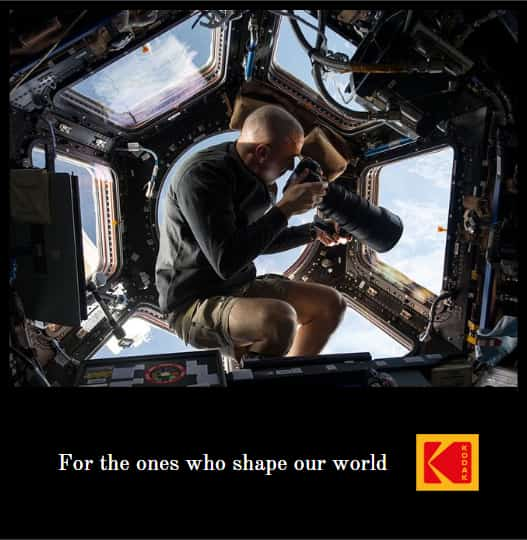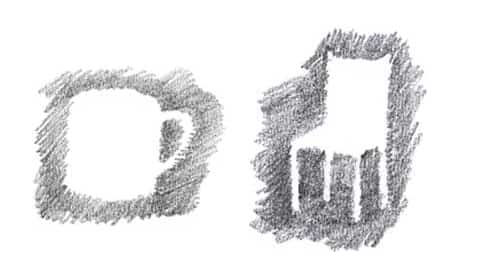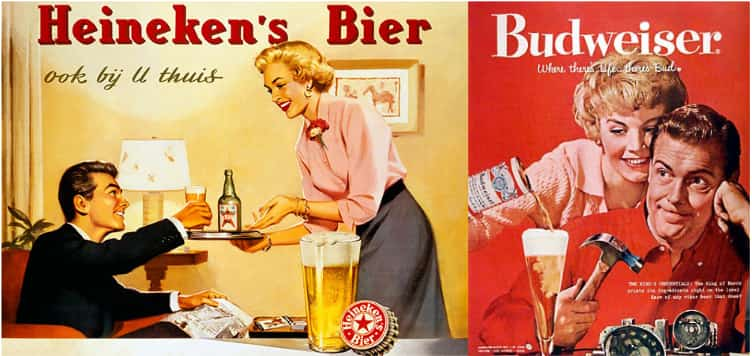There’s a lot goes into creating copy that sells. In this article, we’ll be taking you through several aspects to show you how to find inspiration and turn ideas into profits.
Copy comes in all shapes and sizes but it’s all trying to do one thing: persuade you to buy! But how do you persuade people through your writing when the context and content can be so varied? Here are some tips and tricks to help you out.
One quote from Mad Men, a US TV series about advertisers on Madison Avenue in the 50s and 60s, perfectly sums up the idea that many people have about the advertising industry and why they are wrong.
When junior copywriter Peggy tells Creative Director Don Draper that ‘Sex sells!’ he replies:
“Says who? Just so you know, the people who talk that way think that monkeys can do this. They take all this monkey crap and stick it in a briefcase, completely unaware that their success depends on something more than shoeshine. You are the product. You feeling something. That’s what sells. Not them. Not sex. They can’t do what we do and they hate us for it.”
A lot of marketing is psychological. In fact, it’s pretty much all psychological. Getting inside the customer’s head is key and, once you’re there, you have to know what you want them to do and then get them to do it. The risk is, if you make it too obvious, they’ll notice. Don’t worry though, here’s a formula to make it easy.
A Quick Trick to Create Killer Copy
- Get to know your product.
- Write a list of all of the features that the product has and what it does. Keep this list for later.
- Write down all of the associations you have with the product. For example, if we are selling a camera we can say things like memories, parties, photography, light, nature, wildlife, retro etc. Don’t worry if some of them seem completely random, just get them all down on paper.
- Decide who you want to target the product to.
- Repeat stage 2 by writing down all of the stereotypes you have about your ideal customer.
- Write down all of the fears and desires you associate with your customer. This will give you a good overview of the types of concerns you associate with your chosen demographic. For example, if you choose men aged between 20-30 you might have things like money worries, children, work, lifestyle, travel, love etc.
- Take stages 3 and 6 and see if there are any links and make another list. Once you have this you’ll have a lot of places from which to start generating new ideas.
- Go through your list from stage 7 and think about how what you’ve written might play a role in the life of a person in your demographic. For example memories and travel.
- Start to think of short, snappy slogans that sum up your idea e.g. ‘Take the world with you.’, ‘Never miss a moment.’ ‘Don’t leave the world behind!’ Doing this will give you a clear understanding of exactly what you want people to think when they see your ad.
- Now, find an image that reflects your initial slogans. Once you’ve found one, get rid of your first slogan and write a new one that reflects what you want people to think about when they view it.
Here is a quick example:

If you use this method, you should be able to generate a lot of ideas in a short space of time, and it will enable you to look at your product in a different light.
Of course, this isn’t the only way to write copy, but the process will help you to think more about how you write and how to engage with consumers on a deeper level. Remember, you need to be able to inspire people to act, therefore, it’s important to understand what they want and why they buy. If you can make them feel something that triggers their impulses then you’ll know you’ve got killer copy. It’ll take time to get it right, but it will be well worth the effort.
Understanding how pictures can tell your story

The picture above shows two examples of negative space sketches. The negative space technique involves drawing around an object to provide a picture of the object itself. This generates a new perspective. So how does this apply to marketing?
The reason why the idea that “sex sells” is untrue is because it suggests that if you just show something to people, they will want it. However, when you simply show a picture of a product you’re selling, you aren’t showing people what it really is. To do that, you need to show them how it fits seamlessly into their world.
One of the great things about advertising is the ability to use pictures and words. However, it’s important to treat the two as if they were in communication. In other words, they should speak to each other and not about each other. If you use the writing in your ads to describe the picture, then what’s the point of having the picture? Instead, you should aim to use your writing to bring additional elements out of the picture by contextualising it.
Imagine you have to describe a person’s emotions. The first thing that usually springs to people’s minds is adverbs like ‘happy’, ‘sad’ etc.
Let’s take this stock image of a woman for example:

If you were asked to describe her, how would you do it?
You might say something like: ‘She is leaning against a window and she looks happy because she is smiling.’ Now, while this is true, it’s not very engaging. So how can we make it more interesting?
We need to start thinking about the context. We need to know how this woman fits into the world and how she relates to the consumer. People can see that she’s smiling, but they don’t know why. Now it’s time to start thinking about why your product is making her smile.
Has she just tried your latest drink? Is she wearing your new blouse? Is she holidaying in your perfect getaway? There could be many reasons, and because the picture is quite vague, you can let your words create the context which relates her to your product. Here are a few examples.
‘A little drop of sunshine in cup’ - coffee
‘Be yourself’ - blouse
‘A home away from home’ - holiday
By contextualising in this way, you can add far more emotion with very little effort. The description is still simple, but the perspective has shifted. What’s more, it ensures that you don’t simply describe what people can already see for themselves. Instead, you guide their imaginations to the places where you need them to be. You can then adjust your message accordingly until you have it right where you want it.
Here are a couple of examples, this time advertising a camera.
“The first thing she sees when she wakes, is the last thing he sees at night.”

“The only thing that should ever come between you and the one you love is the light.”

One of the great things about the negative space concept is that once you realise that you can create a world for your product to inhabit, you’ll also be able to withdraw it from that world. Check out this ad for pet adoption, where the positioning of the family directly highlights the one thing making a hole in their lives:

Clever right? Well, this is a simple trick and it’s at your disposal. All it requires is you to know how your product improves people’s lives and then imagine how their lives’ would be without it.
When it comes to writing ad copy in relation to pictures, always remember: Show, don’t Tell! Guide people in with a story but allow their imaginations the freedom to follow you.
Quick Tip for Angles
After you’ve chosen your product, the first stage of marketing will be to work out your angle. For a much more detailed insight into marketing angles and how they work, check out our article What’s the big idea? What major brands can teach you about campaign angles (https://convertingteam.com/blog/campaign-angles/).
Let’s jump back into the world of Mad Men. In another episode, Don Draper tries to convince Heineken that his campaign to target their beer to wealthy housewives is a good idea. He gets the green light and places it in small grocery shops to test it.
Later, Don and Betty arrange a dinner at their house and, much to the surprise of the guests, Betty has bought Heineken, without any direct persuasion from Don.
While Don wanted Betty to buy the beer he wasn’t marketing Heineken directly at her. Instead, he was playing to the doting housewife stereotype, who wants to please her husband. Therefore, he was marketing to the vision housewives have of their husbands, with a foreign beer. Heineken presented an opportunity to target wealthier buyers and lend an air of sophistication to something more commonly associated with the working man.
Of course, Mad Men is fiction…

As you can see, these angles were really used and they really worked. Notice how Heineken is being presented to the suited husband on a silver platter while Budweiser is being poured straight from the can into the husband’s glass as he works.
Let’s look at another common example of this type of marketing using flowers. Generally speaking, flowers are bought by men for women. Therefore, in order to convince a man to buy the flowers, you don’t need to tell him how good flowers are, you need to tell him how happy his wife/girlfriend will be when she receives them. Or, tell him if he doesn’t buy flowers tell him how his wife/girlfriend will leave him for someone who does…

Of course, you don’t have to be quite so direct. But you can play off of the notion that both men and women will see your ad. Women will hope to receive something and men know that. But the risk for the men is that if they don’t, they will be in trouble. Heck, it’s true, so use it.
This is a great tactic to learn and sharpen throughout the year because, if you can get good at it, you can kill it when it comes to seasonal promotions.
Next week, we’re going to be taking a dive into the world of Classic Advertising to see how we can apply their techniques today. Make sure to stay tuned.

